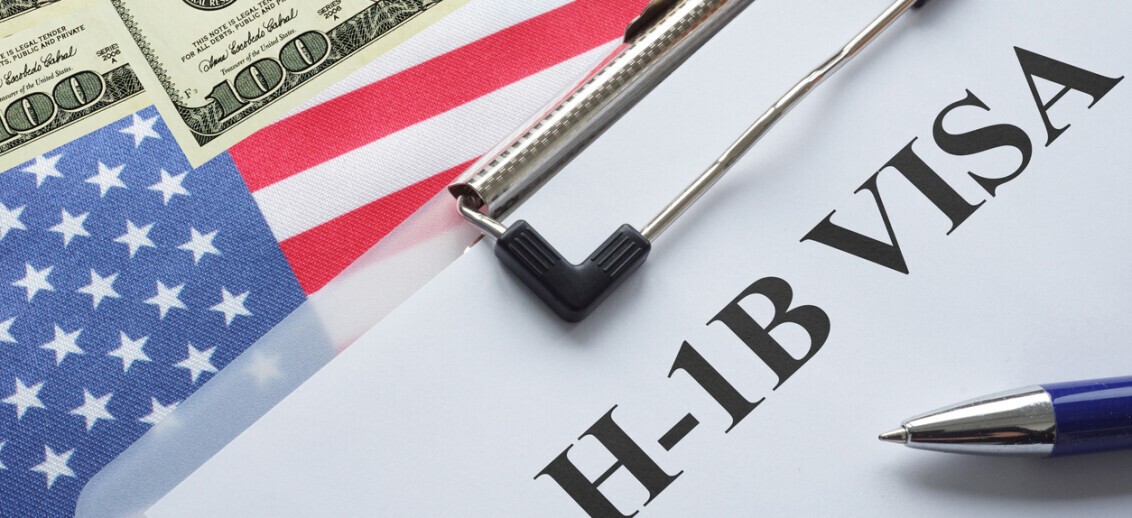On Friday September 19, 2025, President Trump signed an Executive Order (“EO”) mandating that as of Monday, September 22, 2025, foreign nationals seeking to enter the Unites States as H-1B temporary workers must pay a $100,000 fee. The next day, US Citizenship & Immigration Services and Customs and Border Protection (“CBP”) issued a memorandum limiting the fee to foreign nationals seeking entry using H-1B petitions filed on or after September 21 2025.
Here's what we know:
This is an entry ban. To insulate this order against litigation and potential judicial review, the Trump administration cited Immigration and Nationality Act sec. 212(f) and the executive branch’s power to regulate entry to the United States in the EO. The EO and subsequent agency memoranda requires foreign nationals seeking to enter the US as an H-1B temporary worker using a petition filed after September 22, 2025 to pay a $100,000 fee.
Foreign nationals that are the beneficiary of an H-1B visa petition filed before September 21, 2025 are exempt from the fee. This means that anyone currently employed as an H-1B worker is exempt from the fee. The fee will be applied prospectively. Exempt H-1B employees seeking reentry to the US should present both their passports and I-797 Approval Notice to CBP. This will establish the filing date of the petition and exemption from the fee.
For H-1B visa holders issued after September 22, 2025 incurring the $100,000 fee, their employers are obligated to pay this fee. While the EO does not dictate the payor of the fee, US Department of Labor regulations state that employers are obligated to pay all costs associated with the H-1B petition process.
The fee only applies to H-1B workers. It does not apply to any other nonimmigrant classification. If an employer has the option of seeking an H-1B visa or a different long-term employment authorized nonimmigrant visa (such as L-1, TN, or E-2), the other classification may be the better option.
The fee is not assessed to nonimmigrants who enter the US using a different visa and then change status to H-1B. This means a foreign national who enters as a foreign student, intracompany transferee, or other visa and then changes status to H-1B in the United States is not subject to the fee. However. to curb potential abuse, CBP has stated that they intend to deny entry to recent H-1B visa holders who seek to enter the US as a B-1/B-2 visitor. CBP believes that these individuals will seek to avoid the $100,000 entry fee by changing status to H-1B shortly after arriving as a B-1/B-2 visitor.
The fee apples to H-1B workers seeking to enter the United States. If an H-1B worker is in the United States, never leaves, and simply extends his/her stay, the fee is never triggered. Conversely, an employee’s weekend ski trip to Whistler, BC or closed loop cruise to Mexico may cost their employer $100,000. Employers considering prohibiting H-1B workers from engaging in unauthorized international travel to avoid this fee should first consult with your favorite CDF attorney. Depending on the particular circumstances, doing so could potentially violate state or federal law.
The EO allows the Department of Homeland Security (“DHS”) to issue fee exemptions that are in the national interest. In response to political pressure from this EO, the Trump administration is considering exempting physicians from this fee. Health care providers in rural and other medically underserved areas use H-1B visas to employ physicians, surgeons, and other health care workers. Without the exemption, this fee could negatively affect the delivery of health care services. Political pressure from other sectors of the economy may modify this policy further.
What we don’t know is when, where, or how this fee will be collected. The fee applies to beneficiaries of H-1B petitions seeking to enter the US using a petition filed on or after September 22, 2025. There are three potential places where the US Government could seek to collect the fee: the filing of the petition, the issuance of the visa, or at the port of entry to the United States. Since no current H-1 worker is subject to this fee, DHS and the State Department are likely working on how this fee will be collected.
The unanswered questions about this EO indicate that the EO was issued by the White House without consulting the agencies that are expected to implement the EO. Expect this policy to change in the near future. Check this blog for further updates on this EO as it evolves.



